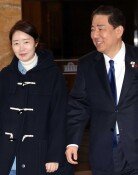Tax gap for 1-trillion-won semiconductor investment is 85 billion won between S. Korea andTaiwan
Tax gap for 1-trillion-won semiconductor investment is 85 billion won between S. Korea andTaiwan
Posted August. 28, 2023 08:25,
Updated August. 28, 2023 08:25
As global semiconductor manufacturers are accelerating their investment in cutting-edge processes to secure a leading position in the future, it was found that companies receive more tax benefits when investing in Taiwan than in South Korea. Taiwan is the most similar to South Korea because it plays a key role in the global supply chain with the No. 1 global foundry company, TSMC, and needs to increase national investment. Experts in the semiconductor industry believe that Taiwan took a more favorable position than South Korea in the competition to attract investment by passing the revised ordinance on industrial innovation, which is known as the Taiwanese Chips Act.
The Dong-A Ilbo, along with Professor Kim Woo-cheol of the Department of Taxation at the University of Seoul, compared investment environments in South Korea and Taiwan with a hypothetical investment scenario of Semiconductor Company A on Sunday. Assumptions were made that Company A’s net profit before corporate tax is two trillion won this year and that the company invested 500 billion won each in R&D and cutting-edge semiconductor facilities. Under these assumptions, the company annually pays 85 billion won more in taxes, or 33.3 percent, in South Korea compared to Taiwan.
If Company A operates a business in South Korea, it will be subject to a corporate tax rate of 24 percent, which amounts to taxes of 480 billion won. It will receive 200 billion won back, which is 40 percent of its R&D investment, as the semiconductor is considered a national strategic technology. In accordance with the K-Chips Act, which was passed in March this year, a total of 95 billion won – 15 percent of facility investment and 10 percent of a year-to-year increase, which is assumed to be 200 billion won – is additionally deducted. In conclusion, the company has 185 billion won by subtracting 295 billion won from 480 billion won. However, South Korea has a minimum tax rate of 17 percent, meaning the company is charged 340 billion won in taxes.
The same company faces a different situation in Taiwan. First of all, the maximum corporate tax rate in Taiwan is 20 percent (400 billion won for Company A). Under the Taiwanese Chips Act, a deduction for R&D investment is 125 billion won (25 percent). According to the rule on the upper limit, 120 billion won is returned. In addition, five percent of facility investment (25 billion won for Company A) is deducted, leading to a total tax of 255 billion won. Taiwan’s lowest effective tax rate is 12 percent (240 billion won for Company A), which is five percentage points lower than South Korea.
Furthermore, Taiwan will continue to offer the same benefits until 2029, while the K-Chips Act won’t be in place after the end of next year, which means there is a bigger tax benefits gap if companies invest longer. “While South Korea claims that it offers a lot of benefits to investment in the country through its Chips Act, it is not as effective in reality due to its minimum tax rate, which is higher than other countries in the world,” said Professor Kim.
will@donga.com · beepark@donga.com




![‘무사고 장롱면허’ 1종 안준다…내년 달라지는 도로교통법 [알쓸톡]](https://dimg.donga.com/c/138/175/90/1/wps/NEWS/IMAGE/2025/12/30/133064716.2.jpg)


